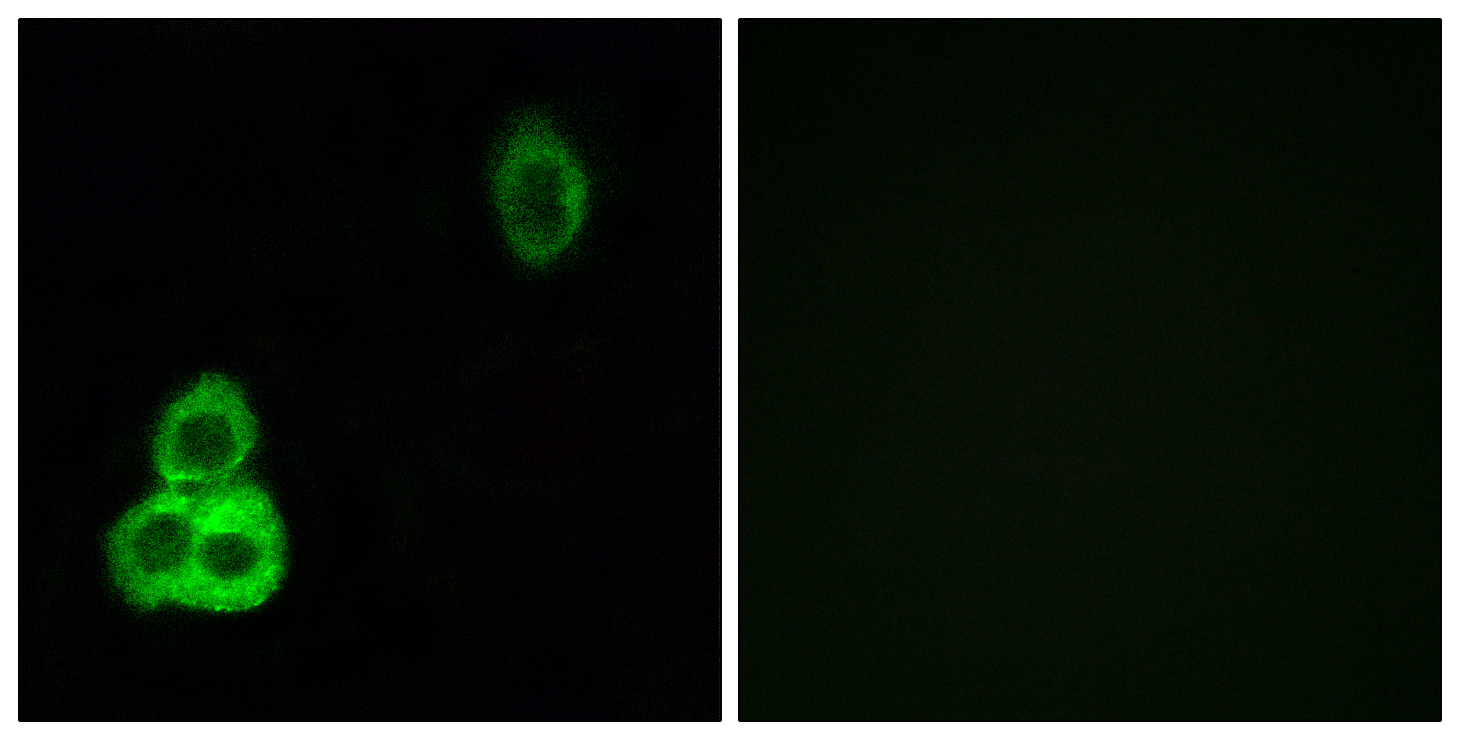CDHF9 Polyclonal Antibody
- Catalog No.:YT0827
- Applications:IF;ELISA
- Reactivity:Human;Mouse;Rat
- Target:
- CDHF9
- Gene Name:
- CELSR1
- Protein Name:
- Cadherin EGF LAG seven-pass G-type receptor 1
- Human Gene Id:
- 9620
- Human Swiss Prot No:
- Q9NYQ6
- Mouse Gene Id:
- 12614
- Mouse Swiss Prot No:
- O35161
- Immunogen:
- The antiserum was produced against synthesized peptide derived from human CELSR1. AA range:921-970
- Specificity:
- CDHF9 Polyclonal Antibody detects endogenous levels of CDHF9 protein.
- Formulation:
- Liquid in PBS containing 50% glycerol, 0.5% BSA and 0.02% sodium azide.
- Source:
- Polyclonal, Rabbit,IgG
- Dilution:
- IF 1:200 - 1:1000. ELISA: 1:10000. Not yet tested in other applications.
- Purification:
- The antibody was affinity-purified from rabbit antiserum by affinity-chromatography using epitope-specific immunogen.
- Concentration:
- 1 mg/ml
- Storage Stability:
- -15°C to -25°C/1 year(Do not lower than -25°C)
- Other Name:
- CELSR1;CDHF9;FMI2;Cadherin EGF LAG seven-pass G-type receptor 1;Cadherin family member 9;Flamingo homolog 2;hFmi2
- Molecular Weight(Da):
- 329kD
- Background:
- The protein encoded by this gene is a member of the flamingo subfamily, part of the cadherin superfamily. The flamingo subfamily consists of nonclassic-type cadherins; a subpopulation that does not interact with catenins. The flamingo cadherins are located at the plasma membrane and have nine cadherin domains, seven epidermal growth factor-like repeats and two laminin A G-type repeats in their ectodomain. They also have seven transmembrane domains, a characteristic unique to this subfamily. It is postulated that these proteins are receptors involved in contact-mediated communication, with cadherin domains acting as homophilic binding regions and the EGF-like domains involved in cell adhesion and receptor-ligand interactions. This particular member is a developmentally regulated, neural-specific gene which plays an unspecified role in early embryogenesis. [provided by RefSeq,
- Function:
- function:Receptor that may have an important role in cell/cell signaling during nervous system formation.,PTM:The iron and 2-oxoglutarate dependent 3-hydroxylation of aspartate and asparagine is (R) stereospecific within EGF domains.,similarity:Belongs to the G-protein coupled receptor 2 family. LN-TM7 subfamily.,similarity:Contains 1 GPS domain.,similarity:Contains 1 laminin EGF-like domain.,similarity:Contains 2 laminin G-like domains.,similarity:Contains 8 EGF-like domains.,similarity:Contains 9 cadherin domains.,
- Subcellular Location:
- Cell membrane; Multi-pass membrane protein.
- Expression:
- Kidney,Testis,
- June 19-2018
- WESTERN IMMUNOBLOTTING PROTOCOL
- June 19-2018
- IMMUNOHISTOCHEMISTRY-PARAFFIN PROTOCOL
- June 19-2018
- IMMUNOFLUORESCENCE PROTOCOL
- September 08-2020
- FLOW-CYTOMEYRT-PROTOCOL
- May 20-2022
- Cell-Based ELISA│解您多样本WB检测之困扰
- July 13-2018
- CELL-BASED-ELISA-PROTOCOL-FOR-ACETYL-PROTEIN
- July 13-2018
- CELL-BASED-ELISA-PROTOCOL-FOR-PHOSPHO-PROTEIN
- July 13-2018
- Antibody-FAQs
- Products Images

- Immunofluorescence analysis of HepG2 cells, using CELSR1 Antibody. The picture on the right is blocked with the synthesized peptide.



